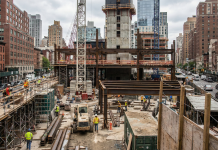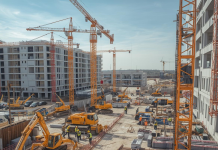Miami-Dade homeowners watched their insurance premiums explode by 322% last year. Jacksonville followed at 226%. Tampa hit 213%.
The national housing market shows 0.1% year-over-year growth—minimal growth, rising mortgage rates, uneven cooling across metros. But Florida’s coastal markets aren’t just cooling. They’re restructuring.
The Rebalancing Nobody Wants to Discuss
Industry experts call this “rebalancing.” The data supports a market adjustment, not a 2008-style collapse.
105 of the nation’s 300 largest markets showed year-over-year price declines from September 2024 to September 2025. That’s 35% of major metros losing value simultaneously.
Florida’s coastal cities dominate the worst of those declines. Cape Coral ranks third-highest nationally for foreclosures in ATTOM’s Q3 2025 report. North Port and Naples aren’t far behind.
Insurance costs, HOA fees, and mortgage rates pushed buyers out.
What This Means for Construction Professionals
The economics of coastal development just changed. Florida builders report that supply-chain delays and labor shortages add 15-20% to project costs. Projects that once took 12 months now stretch to 15-18 months. That timeline extension compounds financing risk at the wrong moment.
When insurance premiums triple in a single year, project economics collapse. Buyers can’t afford the carrying costs. Developers can’t pencil out returns. Lenders recalculate risk premiums.
Markets with stable insurance costs remain viable. Markets where insurance costs spike face headwinds that timeline adjustments and cost controls can’t overcome.
The Sustainability Question
The risk calculus changed overnight.
Developers who ignore insurance data in site selection will face project failures. Builders who don’t factor insurance cost projections into feasibility studies will miscalculate margins.
Florida’s coastal markets face a challenge that cost controls can’t fix. When insurance costs rewrite project economics faster than construction timelines, “rebalancing” means structural uncertainty.
Can coastal construction remain viable when insurance premiums increase 322% in twelve months?
If you’re breaking ground on a Florida coastal project in 2026, run your numbers again. And add another 100% to your insurance projections. The market isn’t waiting for developers to catch up.








